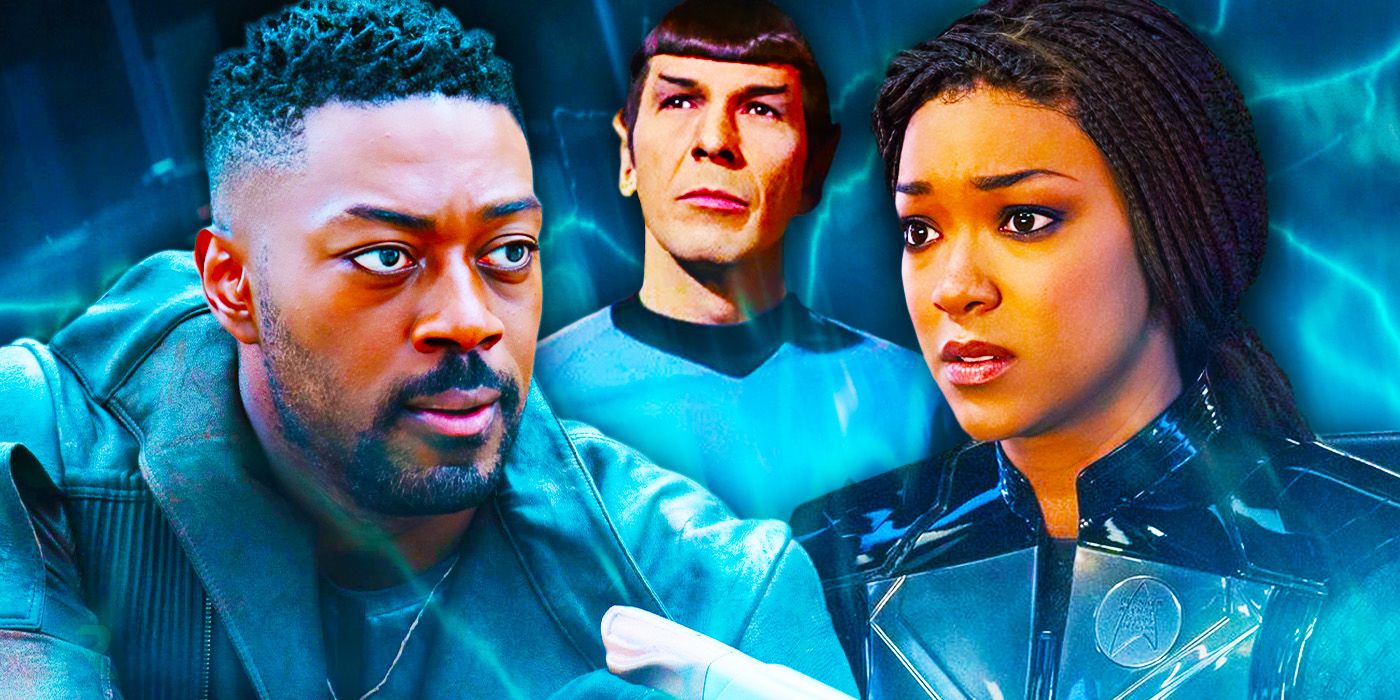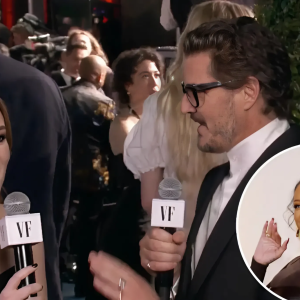The next clue in Star Trek: Discovery season 5’s treasure hunt waits for Michael Burnham and Cleveland Booker behind a dilemma going back to TOS.

Warning: SPOILERS for Star Trek: Discovery Season 5, Episode 3 – “Jinaal”
Summary
- Star Trek episodes use monsters to judge character morality – a theme repeated in Discovery and Lower Decks.
- Jinaal’s test in Star Trek: Discovery requires Burnham and Book to display understanding and respecting different life forms. Book and Burnham used empathy to pass.
- Spock showed the same type of empathy and respect for the Horta in Star Trek: The Original Series.
The answer to Star Trek: Discovery‘s test for Captain Michael Burnham (Sonequa Martin-Green) and Cleveland Booker (David Ajala) on the Trill homeworld is a throwback to a classic episode of Star Trek: The Original Series. In Star Trek: Discovery season 5, episode 3, “Jinaal”, written by Kyle Jarrow and Lauren Wilkinson and directed by Andi Armaganian, Jinaal, the Trill symbiont occupying the body of Dr. Hugh Culber (Wilson Cruz), insists the next piece of the puzzle is on a path winding through the territory of Itronoks, huge, aggressive insectoids that stand in the way of Book and Burnham retrieving the clue.
In Star Trek: The Original Series season 1, episode 26, “The Devil in the Dark”, a monster lurks in the mines of Janus VI, killing miners and destroying equipment, and the USS Enterprise is called in to investigate. Based on the presence of mysterious silicon spheres littering the caves, Mr. Spock (Leonard Nimoy) surmises the creature is silicon-based. That masks the creature from sensors, so Spock and Captain James T. Kirk (William Shatner) enter the mines, phasers drawn, to do what must be done to maintain mining operations. Through a mind meld, Spock learns that the creature is called a Horta, and is killing miners to protect her eggs.
The Answer to Star Trek: Discovery’s Trill Test Is In TOS (and Lower Decks)
The Star Trek “monster” trope is a good way to judge one’s character.
Like the Horta in Star Trek: The Original Series, the Trill Itronoks in Star Trek: Discovery are unknown, aggressive adversaries protecting the same treasure: their own offspring. After being pierced by an Itronok stinger, Book clocks a collection of stones as Itronok eggs. Michael suggests communicating with the creatures much the same way that Spock deduces that the silicon spheres are Horta eggs and initiates a mind meld with the Horta in Star Trek: The Original Series. Book’s attempt to connect via Kwejian empathy is stymied when the Itronoks won’t cooperate, but the cloaking insectoids comply after Book and Burnham, like Kirk, drop their phasers to prove non-aggression.
An unknown life form displaying aggression to protect their young has become a classic Star Trek trope that’s played straight on Star Trek: Discovery, but gets a more lighthearted treatment in Star Trek: Lower Decks, season 4, episode 8, “Caves”. Lt. Samanthan Rutherford (Eugene Cordero) is trapped in a cave with the fearsome Grafflax, so Rutherford communicates with the Grafflax using a modified tricorder and learns the cave monster in Star Trek: Lower Decks is like the Horta: a protective parent fighting off outsiders entering their territory. How someone reacts to perceived monsters is a good way to gauge morality, which Jinaal tells Burnham and Book is exactly the point.
Why Jinaal Hid Star Trek: Discovery’s Progenitor Technology Clue
The Progenitor technology is too powerful for the wrong people.
Jinaal believed it was necessary to put as many blocks as possible between would-be adventurers and the next piece of Star Trek: Discovery season 5’s treasure map due to the sheer power inherent in the Progenitors’ technology. As Commander Paul Stamets (Anthony Rapp) discovers later in Discovery season 5, episode 3, the Progenitor technology can create life according to design, accelerate evolution, modify ecosystems, and may even be able to resurrect people. The team of scientists that included Jinaal and Dr. Vellek (Michael Copeland) decided Progenitor technology was too powerful for the warlike 24th century, better off hidden for a peaceful future when people could use it responsibly.
Star Trek: Discovery ‘s Trill test required understanding and respecting different life forms.
To that end, Jinaal’s team pretended to destroy their research, and devised puzzles designed to test the worthiness of those who sought Progenitor technology, ensuring it wouldn’t fall into the wrong hands. Vellek’s test on Lyrek in Star Trek: Discovery season 5, episode 2, “Under the Twin Moons” required persistence and curiosity to uncover the Romulan revlav, which pointed to Trill. Star Trek: Discovery‘s Trill test required understanding and respecting different life forms, not unlike Spock did with the Horta in Star Trek: The Original Series, so Book’s empathic connection to fauna and Michael Burnham’s xenoanthropology background helped them pass with flying colors.




